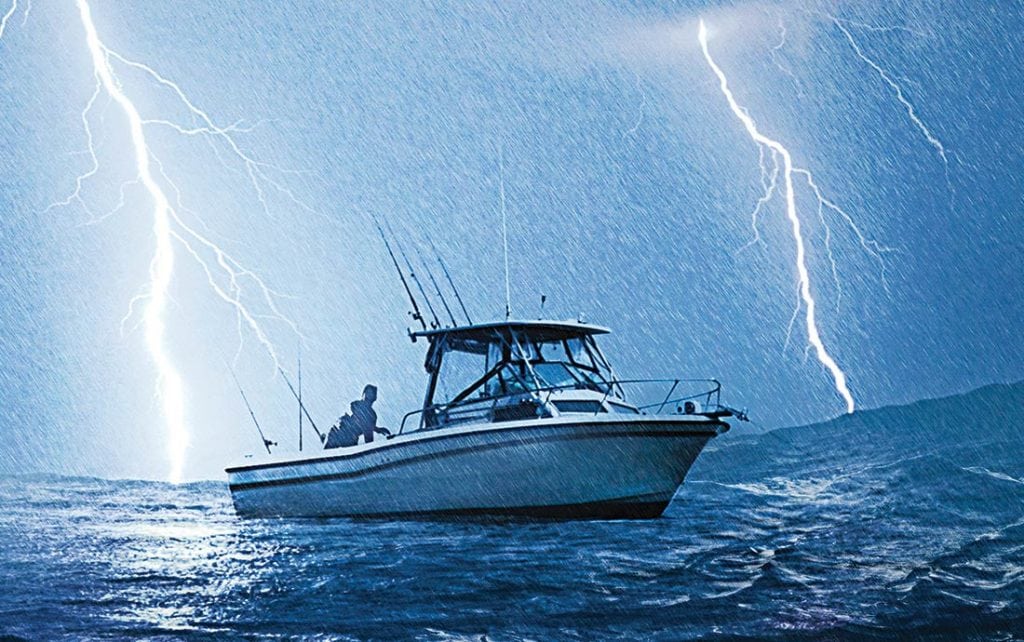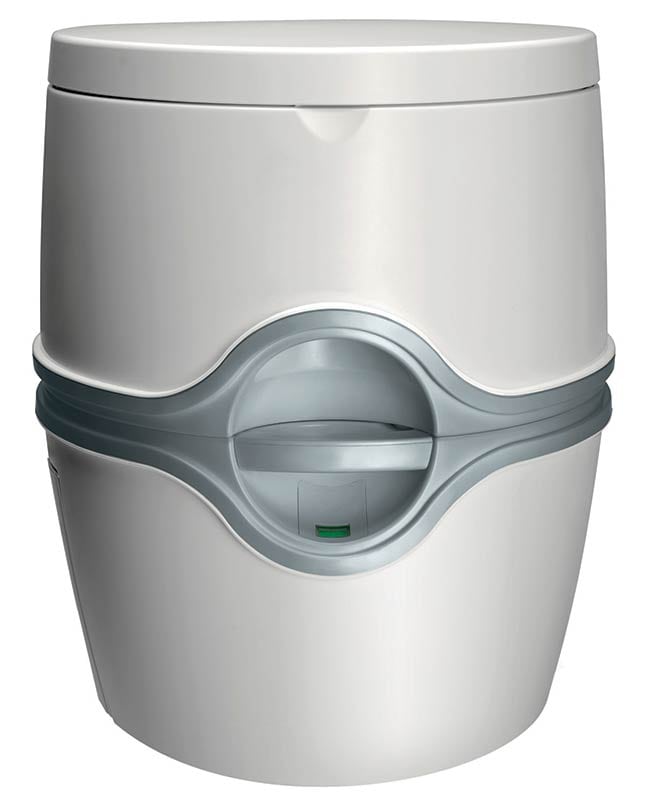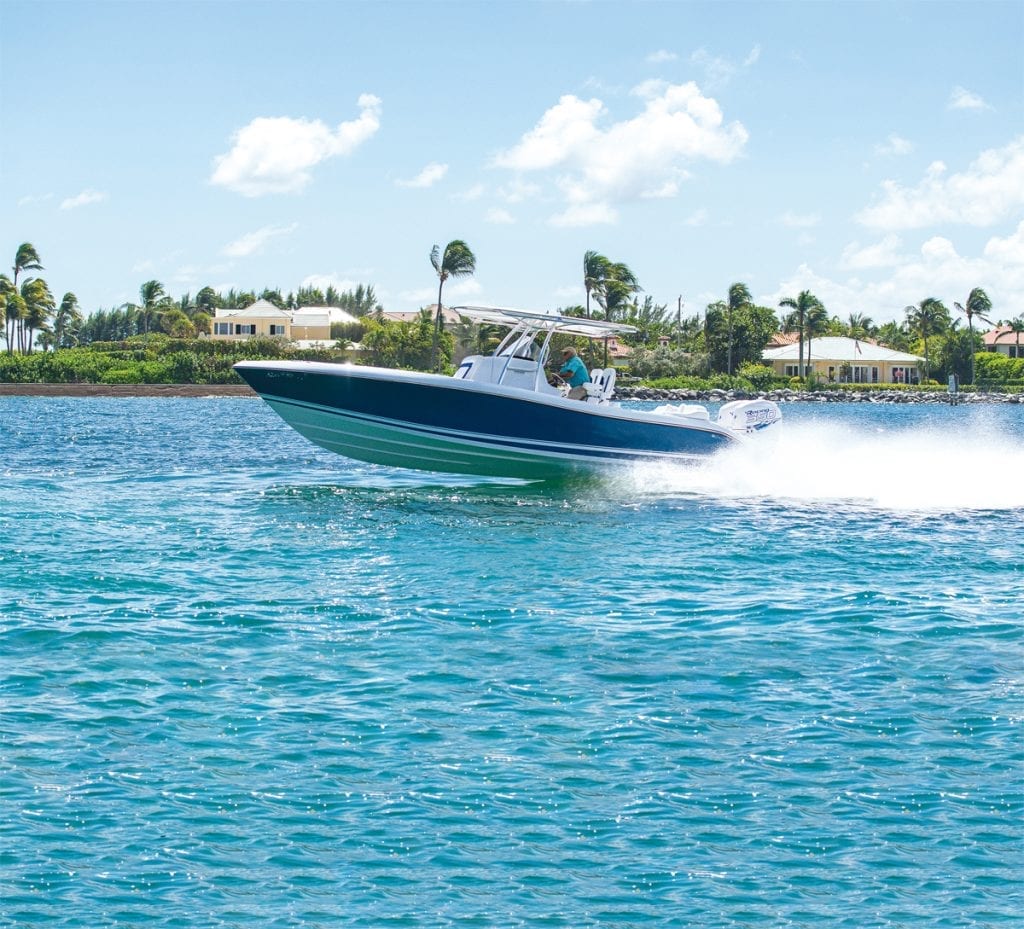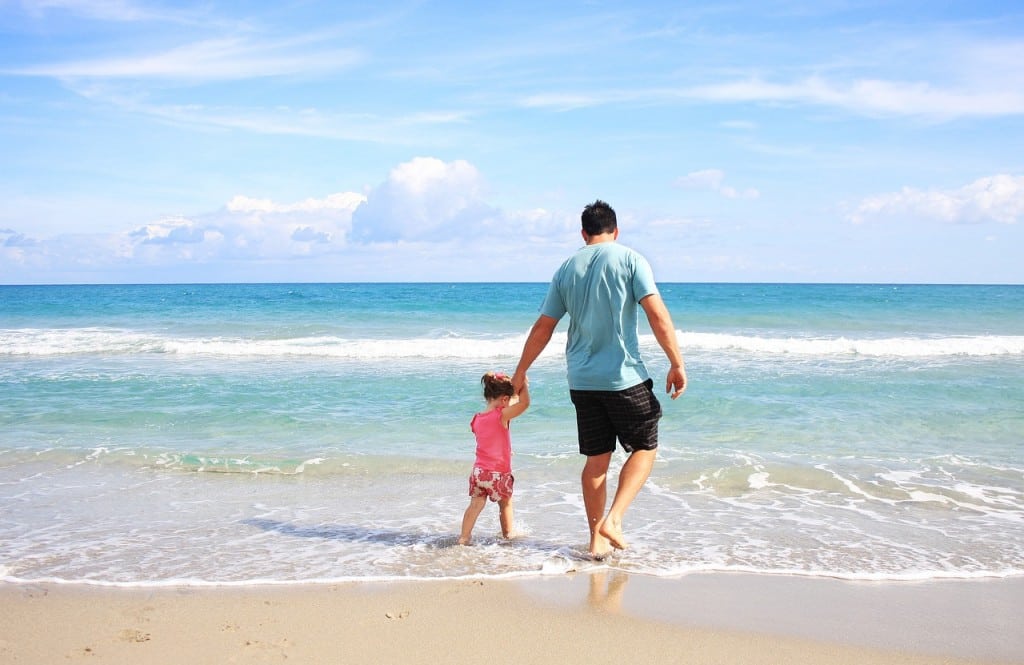Protect your boat from lightning
Studies indicate that the odds of your boat being hit by lightning are about 1,000 to 1. You can increase those odds by two or three in the southern states where thunderstorms are more numerous. That may still not sound like much of a risk, yet the odds of a person being struck by lightning are almost a million to one in any given year—and most people seek shelter when a thunderstorm approaches. Even a fairly benign-looking thunderhead without much in the way of wind or rain can produce lightning, and lightning bolts can strike far from the parent thunderstorm. “Positive giants,” bolts from the top of a cumulonimbus cloud, can travel miles from the storm base.
Lightning typically strikes the tallest object, and boats on the water fit that description. As you would expect, sailboats with high masts have the greatest risk, but even PWCs have been hit. A lightning bolt can easily damage or destroy electronic equipment, and the incredibly high voltages can even blow holes through hulls. Fires are certainly a strong possibility. Lightning also poses great risks to those on board, with injuries that range from minor scrapes to permanent disabilities and even death.
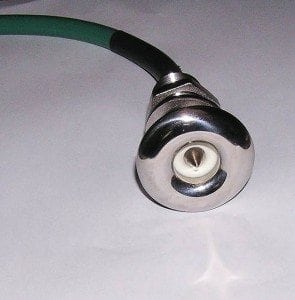
Can you keep your boat from being hit by lightning? No. Can you protect your boat and everything and everyone on it from lightning? Yes! Lightning protection for a boat is similar to that for homes or buildings, and the original concept is credited to Benjamin Franklin. In 1749, Franklin formulated the idea of a lightning rod as part of his research on atmospheric electricity. He believed a large metal pole would attract lightning strikes, and attached wires could dissipate the electricity harmlessly into the ground.
With modern lightning protection, you’re not trying to attract lightning bolts, just intercept them before they do damage. The basic principle is still the same as Franklin’s: Have the bolt hit a “lightning rod,” now referred to as “air terminals,” and then direct the electrical charge via conducting wires into, in this case, the water.
The most basic lightning protection system (LPS) uses the mast as a lightning rod/air terminal, the interceptor of the lightning strike. A metal mast will work, but for non-metal masts a pointed metal spike or a prefabricated air terminal can be mounted on the mast top. This in turn is connected to “down conductors,” cables or strips using aluminum or copper, which will take the electric charge down to a ground plate. The plate should be at least one square foot in area and be made of a good conducting material. To determine the area protected by such a system, start at the top of your mast and sweep out an arc 45 degrees from the mast down to the surface. This inverted cone will be your safe zone.
For other boats, especially those without a tall mast, multiple air terminals would be needed at the top of the vessel. Down conductors would be on the outside of the boat, and you should have multiple grounding terminals at the waterline to prevent sideflashes. (A sideflash occurs when some of the electrical current from the main lightning strike pathway jumps a small distance to another object.) This would make a safely enclosed “cage” protecting everything inside.
All large metal objects should be bonded together by conducting wires or cables to equalize the electrical potential. It’s the differences in potential that cause sideflashes. This would also be true for metal-hulled boats.
Engines should be included in the wiring. Special precautions should be taken to protect electronics that are very susceptible to lightning damage. Besides grounding, surge protectors should also be installed.
Although it is highly recommended that a marine electrician actually installs the lightning protection, this can be a DIY project to retrofit a boat. If you are buying a new boat, a LPS can be incorporated into the design depending on the vessel’s specifications and, of course, economic concerns.
To check on the standards you should follow, refer to the National Fire Protection Association NFPA 870: Standard for the Installation of Lighting Protection Systems and the standards for lightning protection as set forth by the American Boat and Yacht Council (ABYC) TE-4 Lightning Protection.
Marine Lightning Protection, Inc. in Gainesville, Florida, specializes in lightning protection for boats. Dr. Ewen Thomson, the company’s founder, is an electrical engineer and sailor. His pioneering work has led to a considerable improvement in marine lightning protection, and his website provides a vast amount of information on lightning protection and lightning protection systems.
— By Ed Brotak, Southern Boating Magazine March 20116
INFORMATION:
abycinc.org
marinelightning.com
nfpa.org
Ed Brotak is a retired meteorology professor with more than 80 articles published, many dealing with weather hazards for both marine and aviation interests.


